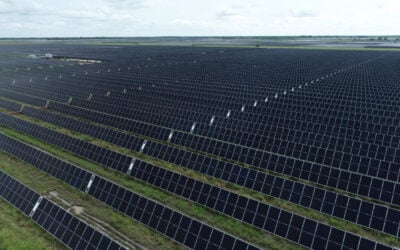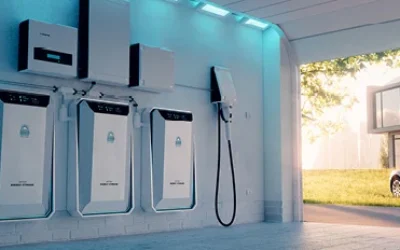
A residential virtual power plant (VPP) pilot programme in Maryland will bid to participate in ancillary services in the PJM Interconnection wholesale market.
The VPP, which aggregates battery energy storage systems (BESS) installed at households in the Elk Neck peninsula area of Cecil County in Maryland, will be the first project of its kind to be enrolled into the grid operator’s wholesale market.
Enjoy 12 months of exclusive analysis
- Regular insight and analysis of the industry’s biggest developments
- In-depth interviews with the industry’s leading figures
- Annual digital subscription to the PV Tech Power journal
- Discounts on Solar Media’s portfolio of events, in-person and virtual
The 0.55MW / 2.2MWh VPP is scheduled to be fully operational in the first quarter of 2022 and is being created as a partnership between technology provider Sunverge and utility Delmarva Power.
Sunverge, which has been something of a pioneer in the VPP space, won out in a competitive bidding process against four other providers to provide systems and software to the project, as reported by Energy-Storage.news in May 2020.
Many homes in the Elk Neck peninsula are located in a heavily forested area, receiving electricity through a distribution feeder line which runs for four miles overground and underground to reach them.
The VPP will enable them to back up their power supply in case of the outages to which they can be subjected, while it will also enable the local network to free up hosting capacity for distributed energy resources (DER) like solar and electric vehicle (EV) charging.
The project was approved by the Maryland Public Service Commission earlier this year, with Sunverge CEO Martin Milani calling it “an important proof point in demonstrating the value of multi-service VPPs and aggregated residential battery systems, both for the benefit of consumers and the grid”.
Yesterday, Sunverge and Delmarva Power, a subsidiary of Exelon, announced that they had entered into an agreement with PJM Interconnection to test the VPP’s participation in grid services in a real-world setting. Maryland Public Service Commission has given all requisite approvals.
PJM Interconnection and the US’ other regional transmission organisations (RTOs) and independent system operators (ISOs) have been instructed by the Federal Energy Regulatory Commission (FERC) to remove barriers to participation for energy storage systems and other DERs in their wholesale markets.
FERC Order 841, which pertains to energy storage has already begun implementation in many RTO and ISO service areas. FERC Order 2222, which applies to all DERs, is on the way.
“The Elk Neck Battery Storage Pilot Project will allow aggregated DER to test the markets under real-world market conditions, providing lessons for PJM and all its stakeholders in alignment with the spirit of FERC Order 2222,” PJM’s senior manager of applied innovation, Eric Hsia, said.
“By participating in PJM’s ancillary wholesale market, Elk Neck project will demonstrate the path forward for Multi-service VPP’s participating in wholesale ancillary markets under FERC Order 2222 and add yet another multifaceted value stream for DERs,” Sunverge CEO Milani said.
According to Milani, Sunverge’s distributed energy resource control platform will be able to “simultaneously run multiple services with different priorities,” allowing dynamic optimisation for different services, “under different grid and market conditions”.
A few years ago PJM was actually the first regional grid operator in the US to open up its ancillary services markets for battery storage to be able to compete, under a “pay-for-performance” model, leading to the deployment of some of the country’s first large-scale battery storage systems in its service area, which spans all or part of more than a dozen states in the eastern US.






